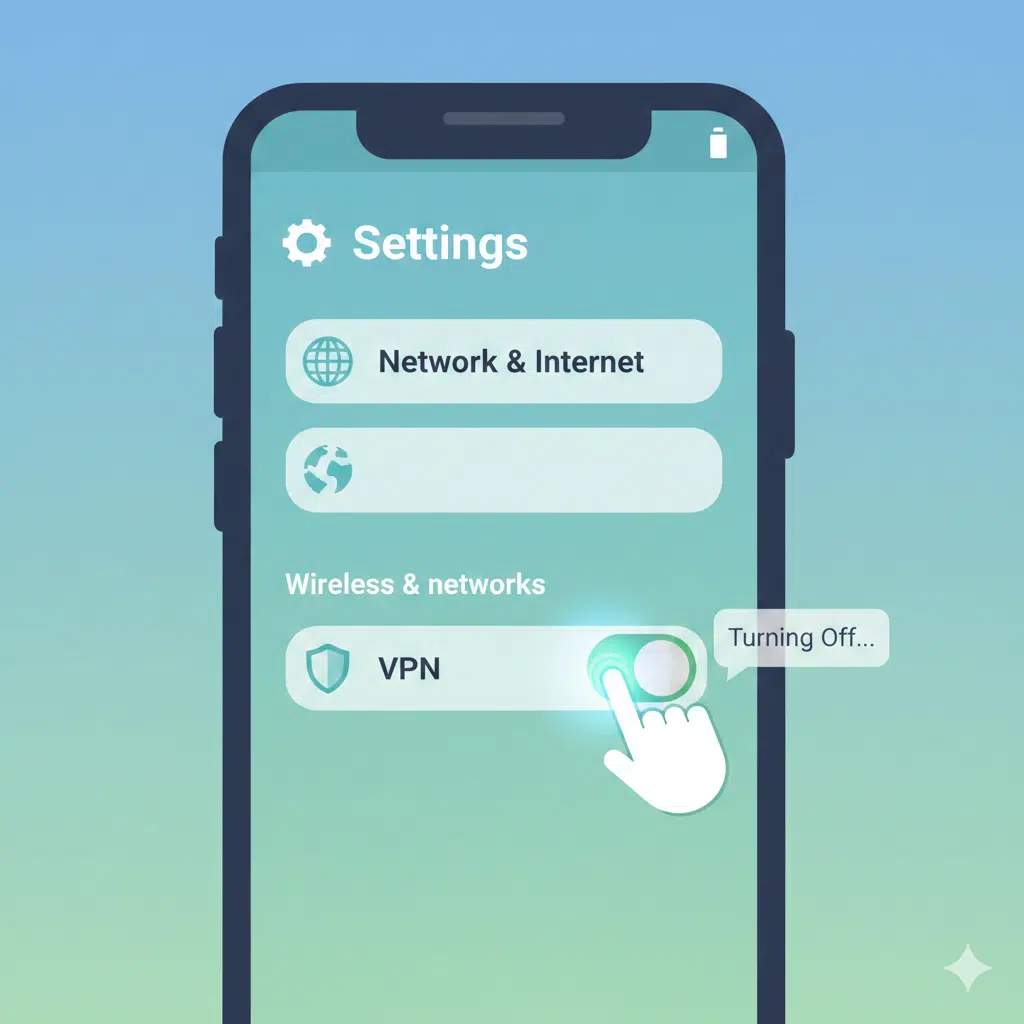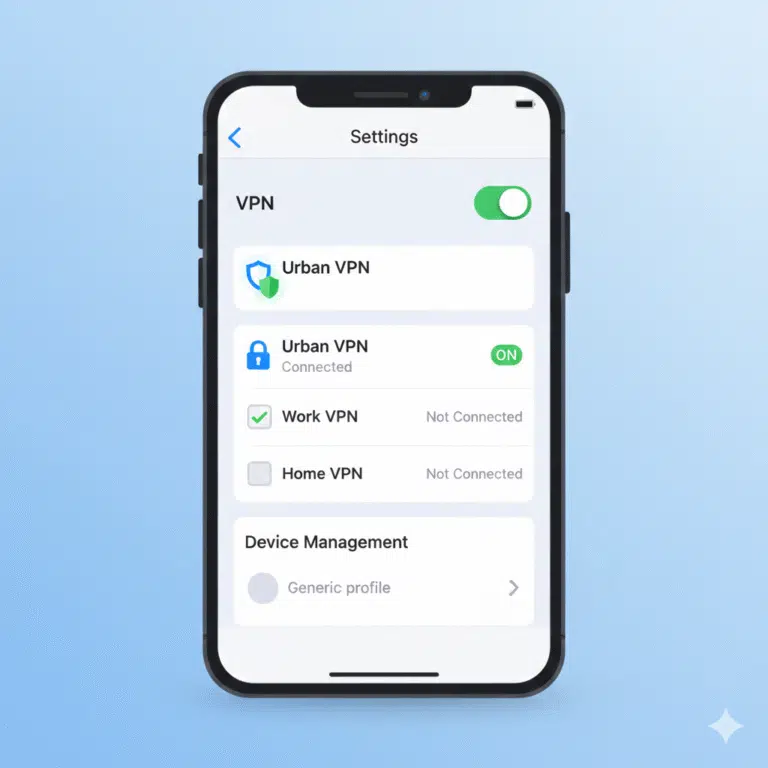Turning off a VPN on mobile devices is a common operational task, especially in enterprise environments where Android devices are used with MDM policies or split-tunneling. This guide explains How To Turn Off Vpn On Android while addressing the underlying technical considerations IT managers and network engineers must account for.
Why would an Android device keep the VPN active?
Android maintains persistent VPN tunnels when configured via device-level policies, enterprise profiles, or apps that enforce always-on behavior. Many VPN clients also enable automatic reconnection to ensure uninterrupted encryption. This can cause scenarios where users cannot disable the VPN normally. Understanding these mechanisms helps teams validate compliance and troubleshoot connectivity bottlenecks. For context on persistent tunneling behaviors in VPN hardware, see guidance on concentrators (source: Wikipedia).
How do you turn off a VPN using Android system settings?
The most direct approach is through the system network panel. On modern Android builds, the VPN toggle is exposed under Settings → Network & Internet → VPN. From there, the user can disconnect active sessions and disable “Always-on VPN”. Administrators should note that if the device is governed by enterprise restrictions, the toggle may be greyed out. Endpoint management dashboards, including work profile controls, may override local settings. When diagnosing this, teams often compare behavior with similar restrictions in other applications that rely on enterprise tunneling, such as those described in troubleshooting guides for interface conflicts (source: cloudflare.com/learning).
Internal link included: review of multi-tunnel architectures when discussing persistent sessions → secure multi-tunnel VPN device configurations (via item 4).
Why might a VPN not disable even after toggling it off?
Residual
What steps help IT teams verify the VPN is fully disconnected?
Verification requires both OS-level and network-level checks. Teams should validate:
- The VPN app reports “Disconnected.”
- The key icon disappears from the Android status bar.
- DNS queries resolve through the ISP or enterprise resolver rather than the VPN’s endpoint.
- IP address origin matches the local network rather than a remote region.
Tools like ipinfo.io, internal diagnostics dashboards, and enterprise mobile gateways can confirm the absence of tunneled traffic. Many organizations also test against internal access controls to confirm split-tunnel policies aren’t still active.
Constraints and performance:
Testing device VPN behavior depends on Android version, vendor skins, and device administration mode. OEM variations (Samsung One UI, Xiaomi MIUI, Pixel AOSP) implement VPN hooks differently. Network conditions also affect perceived disablement—if DNS caching persists or an ISP applies transparent proxies, the user may appear “still on VPN” even after disconnection. Always-on configurations in Android Enterprise can override local user action. Likewise, poorly optimized VPN clients can retain rogue background processes that consume battery or maintain partial tunnels until the service is force-stopped.
Teams must also consider the performance implications: disabling a VPN can alter routing tables abruptly, causing temporary session drops, TLS renegotiation, and application reconnections. This is especially relevant for workloads reliant on persistent sockets or real-time communication apps.
How should IT administrators approach policy-based restrictions?
When VPN disablement is blocked, the restriction usually originates from:
- MDM profiles (e.g., Android Enterprise “Always-On VPN”)
- Work profile security policies
- Zero-trust agents enforcing continuous tunneling
- Conditional access systems that require encrypted transport
Administrators should audit their mobility management console. Resetting the policy, removing the work profile, or reassigning the device to a non-restricted group often restores local control.
Before deactivating policies, consider compliance implications. Always-on VPN may be required for regulated environments (HIPAA, PCI DSS). Documentation from authoritative sources like TechRadar clarifies industry-standard expectations for organizational VPN usage (source: TechRadar).
Internal link included: referencing VPN concentrator and routing conflict cases via items 4 and 17, positioned earlier in the article.
What is the safest method to ensure users can disable the VPN without breaking compliance?
⭐ Introduction: Why does the user need to know How To ?
Disabling VPNs on Android devices has become a necessary step in many situations—such as resolving internet problems, overcoming slow connections, or testing access to local services.
However, in many cases…
In this section, we will explain the technical basis for why the VPN connection persists, adding internal and external links that help…
🔍 Why does the VPN connection persist even after attempting to stop it?
Android devices follow a Persistent VPN mechanism that automatically restarts the connection if:
- The VPN was enabled via the Always-On VPN setting .
- It was managed by an MDM or Work Profile system .
- The VPN application itself contained an Auto-Reconnect Daemon .
- There were security policies in place that prevented the user from disabling it.
In addition,
🔗 External links
- Google Official Docs – Always-On VPN
https://support.google.com/work/android/answer/6278029 - Android Developers – VPN Service
https://developer.android.com/reference/android/net/VpnService - Cloudflare Learning – How VPN works
https://www.cloudflare.com/learning/vpn/what-is-a-vpn/
🔗 Internal links (Plac
- How to set up a VPN
/se - Fix slow internet problems on Android
/fix-slow-internet-android - أ
/best-vpn-apps-2025
📌 What happens technically inside Android?
Android creates a tunnel that routes all data traffic
until
- DNS caching
- Yes
- Routing tables not refreshed
- VPN app services still running
This is why some apps keep showing the device as if it is still “connected to VPN”.
🔗 External links:
- TechRadar – How VPN routing works
https://www.techradar.com - Wikipedia – VPN tunneling
https://en.wikipedia.org/wiki/Tunneling_protocol



